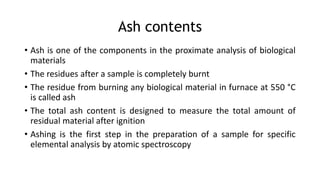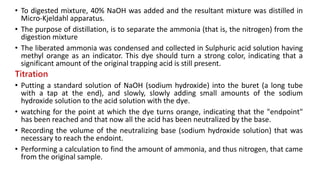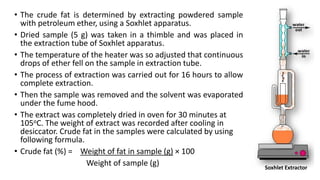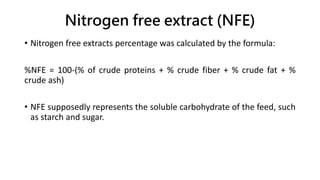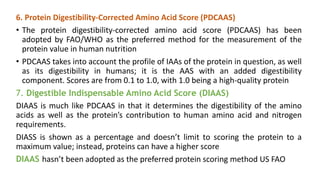This document discusses proximate analysis, which quantitatively analyzes macronutrients in feed. It describes the Weende or proximate analysis method developed in 1860 that partitions compounds in feed into six categories based on chemical properties: moisture, ash, crude protein, crude fat, crude fiber, and nitrogen-free extracts. The document then provides procedures and calculations for determining the percentages of each component through methods like drying samples to find moisture content or ashing samples in a furnace to determine ash content.



